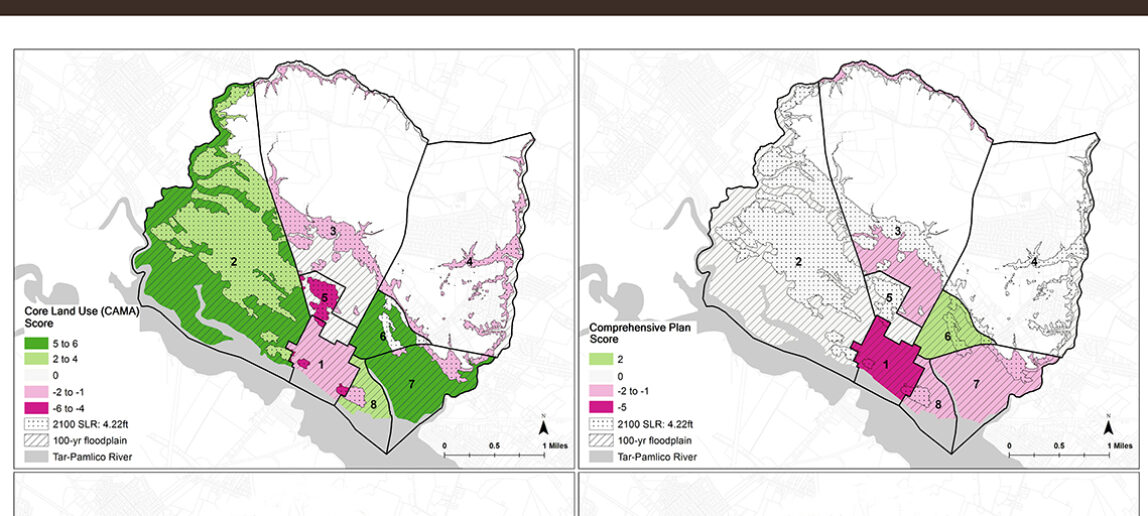American Planning Association offers training for Texas A&M-developed hazard plan coordination system
A scorecard developed by urban planning faculty at Texas A&M that reveals inconsistencies in natural disaster plans has proven so effective for communities striving to reduce natural hazard risks and speed disaster recovery that the American Planning Association now offers to teach the scorecard’s use to planners throughout the nation.
“The course has been ‘live’ for about a month on the APA site and, without marketing or promotion, has already received high participation and excellent ratings,” said Jaimie Hicks Masterson, director of Texas Target Communities, an outreach unit of the School of Architecture. Masterson, Siyu Yu and Matthew Malecha are three Texas A&M urban planning experts who produced a scorecard guidebook that is the basis for the APA scorecard course.
First developed in 2015 and formally known as the Plan Integration for Resilience Scorecard™, the scorecard enables planners to take a “bird’s eye view” of what is often an assortment of local and regional plans , some of which don’t necessarily address hazards like flooding and sea level rise, and the places and neighborhoods most vulnerable to them.
The scorecard provides a thorough look at how all policies, actions, and projects across different plans stack up and decrease or unknowingly exacerbate hazard vulnerabilities, said Masterson. “Previously, most local governments only looked at the hazard mitigation plan, but we know that all types of planning documents influence community vulnerability and using the scorecard provides a detailed understanding of these dynamics.”
After the scorecard and guidebook were developed, local and regional emergency managers, urban planners, floodplain managers, and economic development directors finally had a way to effectively reveal the inconsistencies between various agencies’ plans to deal with natural disasters, said Masterson. “The scorecard is a great aid for communities to strategically and efficiently invest in targeted projects to increase their resilience to natural disasters like flooding or hurricanes.”
“It’s great to see the scorecard achieving this high profile to reach, influence, and help the nationwide APA audience of practicing planners,” said Siyu Yu, associate professor of urban planning, who teaches the online course with Masterson and Matthew Malecha, Texas A&M instructional assistant professor of urban planning.
The scorecard was initially developed by a research team led by Texas A&M professor of urban planning Phil Berke, who is now a research professor at the Department of City of Regional Planning at the University of North Carolina-Chapel Hill. The team also included Galen Newman, who now heads the Texas A&M Department of Landscape Architecture & Urban Planning, and Jaekyung Lee, then an Aggie Ph.D. Urban and Regional Sciences student and now an assistant professor of urban design and planning at Honjik University.
The scorecard’s development has been funded since its inception by the Department of Homeland Security via the Coastal Resilience Center at the University of North Carolina-Chapel Hill.
It’s been in use for years by Texas Target Communities, whose affiliated students and faculty develop plans for small communities that often lack planning resources. The scorecard is also used by researchers with the Hazard Reduction and Recovery Center, whose scholars study how hazards affect the natural and built environments and the people who live there.
The concept also has the potential for numerous additional applications, said Malecha, Texas A&M instructional assistant professor of urban planning.
“The coming year will bring new research from our team designed to extend the scorecard’s methodology to public health, extreme heat and wildfire risks, cost/benefit and equity analyses, and rural planning,” he said.


